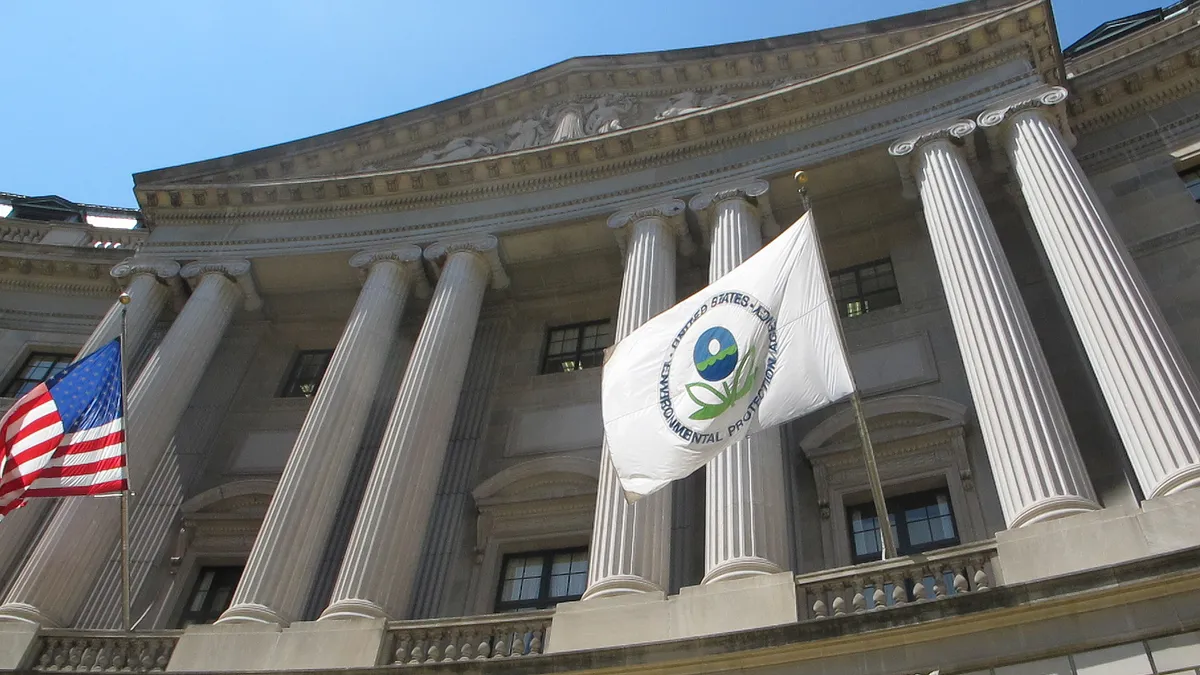Environmental advocates and state attorneys general on Wednesday signaled they would file lawsuits to block the U.S. Environmental Protection Agency's (EPA) Affordable Clean Energy (ACE) rule, which they say will be significantly less effective than the Obama-era Clean Power Plan it replaces.
The EPA finalized the rule on Wednesday, and as a result expects carbon emissions from the electric sector to fall by as much as 35% below 2005 levels by 2030. But opponents of the new rule say updates to power sector regulations should result in far greater decarbonization, and by failing to consider more effective emission control options the agency violated the Clean Air Act.
The Clean Power Plan was immediately challenged once finalized by the Obama EPA. ACE will now face a similar situation.
"This catastrophic rule will prop up dirty and expensive coal power plants, undercut clean and sustainable electricity, and leave New Yorkers and all other Americans to foot the bill," New York Attorney General Letitia James said in a statement.
James called the new rule a "clear violation" of the Clean Air Act, adding "I intend to sue the EPA over this 'Dirty Power.'"
California Attorney General Xavier Becerra said the state would fight the new rule as part of a multi-state coalition, and called ACE a "toothless substitute."
The rule "does nothing to reduce carbon dioxide emissions or to promote clean energy generation," Becerra said in a statement. "Instead, the new rule is merely designed to dismantle the Clean Power Plan and protect coal and gas companies from any serious limits on climate change emissions from power plants."
The Natural Resources Defense Council (NRDC) also indicated it is ready to sue.
When the Obama Administration finalized the Clean Power Plan, it said it would reduce carbon emissions from the power sector 32% by 2030. The EPA now says the new rule could drive more reductions, but opponents of ACE say the majority of that is simply due to market forces.
NRDC says the EPA should instead have strengthened the Obama-era regulation to cut power plant emissions by 60% from 2005 levels by 2030.
However, "the most egregious flaw is the Trump EPA's attempt to put in place a new, highly constrained legal interpretation that would do damage well beyond this specific rule, hindering future use of the Clean Air Act to significantly curb climate-changing pollution," NRDC attorney Lissa Lynch wrote.
Coal's slide may be unstoppable
That interpretation would limit the "best system of emission reduction" required by the Clean Air Act to measures that can be applied to an individual source. But Lynch said the law "sets no such restriction" and its language "allows a more flexible conception ... including the use of credits or trading to enable deeper reductions."
"As long as the Trump EPA keeps taking lawless actions to undermine climate protections, we'll keep going to court to stop them," Lynch said.
It remains to be seen, however, how much of an impact the rule will actually have for coal plants. The decline of coal and rise of renewables has been faster than anticipated, and a recent report makes clear that market forces are rapidly changing the energy landscape.
Analysis from Ceres this week showed generation of zero-carbon resources surpassed coal and gas individually in the U.S for the first time in 2017 — though gas and coal combined still made up over half the country's generation.
Carbon-free resources made up 35.4% of electricity generation, beating out coal's 29.8% and natural gas' 32.1%.
The EPA said the new emissions rule will grant states more flexibility. The policy identifies heat rate improvements as the best system of emission reduction for coal-fired power plants and limits its requirements to what can be implemented at the source.
While Trump has vowed to stop the "war on coal," experts say the closure of hundreds of coal-fired plants is really driven by economics.
"The so-called war on coal is based upon economics, not regulation," Thaddeus Lightfoot, a partner at the law firm Dorsey & Whitney, said in an email. "Investor-owned utilities are phasing out coal-fired power plants not based upon possible EPA regulation, but based upon the uneconomical cost of retrofitting the plants."
EPA Administrator Andrew Wheeler said yesterday that fossil fuels will remain "a key part of the energy mix," despite increasing retirements of coal generation units in the U.S.
Still, coal advocates hailed the new rule even as they acknowledged the dwindling plant numbers.
"The rule takes a sensible and legally sound approach to regulating carbon dioxide emissions from the nation's coal fleet," Michelle Bloodworth, president and CEO of the coal advocacy group America's Power, said in a statement. In particular, she said the group is happy the rule "provides flexibility to set reasonable carbon dioxide standards that do not force the premature retirement of more coal-fired generating units."
In the same statement, the coal advocacy group acknowledge that nearly 40% of the U.S. coal fleet has retired or announced plans to retire.
Philanthropist Michael Bloomberg recently announced a $500 million investment in a new "Beyond Carbon" campaign that includes a goal to close all remaining coal plants by 2030. The "Beyond Coal" campaign launched eight years ago, and has witnessed planned closures of 289 of the country's 530 coal-fired power plants.























